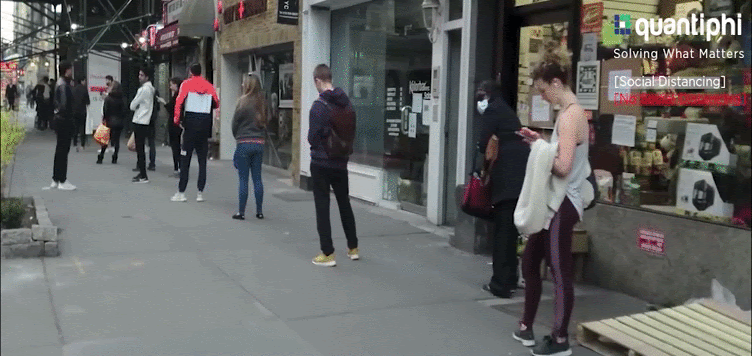Even though the insurance industry has gone through several changes in the past few decades, the core of the business remains the same – “underwriting risks”. The ability of an insurer to understand and account for risk still remains the most crucial asset for an insurer.
The ever-changing and unpredictable nature of today’s political and geographical landscape in conjunction with uncertainties in disease outbreak and spread patterns like COVID-19 evolving into a pandemic has ushered the way to a whole new set of unprecedented risks in the industry.
Trending Intelligent Risk Mitigation or Loss Control Solutions for Auto and Home
The increasing complexity of understanding and accounting for these emerging risks is forcing insurers to invest in loss prevention and risk mitigation measures to balance the underwriting loss.
An example to the above is the surge in the adoption of telematics devices across homes and vehicles, enabling insurers to get access to a much broader range of data for predicting and preventing any sort of accidents that could lead to hefty claims.
Also, dynamic risk scoring for customer profiles based on behavioral patterns has been gaining momentum, especially in the auto space. Driving patterns and behavior are tracked and analyzed to provide alerts to customers on how they can improve their driving behavior by assigning a corresponding risk score. The risk score directly correlates to a dynamic pricing model that calculates the risk score based premium which encourages the customer to drive safer.
A similar process is being replicated across homeowners insurance lines where smart home systems or use of telematic devices to monitor house safety features like fire alarms, door/gated security, Gas leakage detection, Smart plumbing/water level monitoring for pipes or taps maintenance, etc. is being encouraged in terms of safe home/safe driver discounts in the premiums for policyholders.
Want to explore intelligent risk mitigation and loss control solutions? Get in touch with our experts now!
Creating a Safer Environment With Data to Mitigate the Impacts of Hazard Risks Due to Natural Calamities/Disasters
The use of telematics and IoT devices to capture real-time data along with video and image data captured through security cameras can be invaluable in mitigating risks. Loose ends, pressure monitors can be early indicators of safety hazards which can lead to accidents and in turn lead to claims.
Bundling insurance products with services like IoT devices and telematics will help insurers in better understanding, preparing, and prevention of risks thereby creating a safer environment for their customers.
The amount of data being collected in real-time from satellites, drones, and other devices will greatly help insurers in predicting and reducing the effect of risks. For example, coastal floods and weather-related calamities data collected through satellites and drones can help insurers better evaluate the risks and extend coverage to locations and developments, previously rated as too high a risk to insure.
Need for the Adoption of Better Risk Mitigation or Loss Control Measures in Commercial Lines and Workplaces
With the onset of COVID-19 and other regulatory measures, the financial stability of businesses and companies has been impacted. Many employers and employees are forced to return to their workplaces, resulting in an increased amount of risk exposure that needs to be mitigated with proper loss control strategies or workplace safety measures in place. Government regulations or changes in the laws for the benefit of the people have further contributed to the mounting pressure on continuous monitoring to make sure necessary safety protocols are followed.
Recent changes in California’s workers’ compensation laws for the COVID-19 compelling insurers or employers to cover treatment costs under the Workers Compensation Line if an employee contracts COVID-19 at the workplace is a fine example of this. Employees are eligible for all types of workers’ compensation benefits, including medical treatment, hospitalization, disability benefits, and death benefits. Medical care under worker’s compensation comes without any deductibles, co-pays, or share of cost that an employee might otherwise have to pay. The claims process needs to be streamlined with a shift in the burden of proof that typically falls on the worker to employer or insurer with a 30 day period to rebut a claim. This not only results in increased risk exposure and unplanned pressure on their loss reserves but also creates the need to focus on risk mitigation by constantly monitoring and ensuring safety measures. Some of California’s largest workers’ compensation insurers have already started to ensure and monitor whether health checks are in place and protocols like social distancing and wearing masks are not being violated.
Moving Forward With AI
AI can crunch through the data to identify patterns that may never have been visible to the human eye.
Using AI, insurers and employers can constantly monitor whether social distancing norms and face protection through masks are being followed by workers and provide real-time alerts to prioritized workers who have been violating the norms frequently or identify hotspots with high population density or movement where there is high probability of the norms being violated frequently.

Deep learning technologies also allow insurers to better identify data connections and forecast results. Insurers can provide smart sensor services as part of their products to improve customers’ health monitoring and encourage a healthier lifestyle while at the same time, providing the insurer with access to a larger data pool for health statistics.
Looking to explore AI-driven solutions to address different types of emerging risks in the insurance industry? Explore our solution offerings here!







